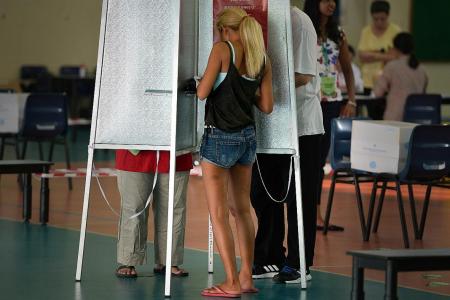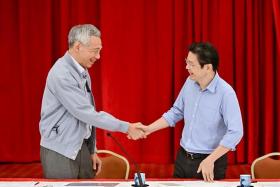Changes made to number of polling districts in 7 GRCs
This is to ensure that no polling station handles too many or too few voters.
Changes have been made to several polling districts under the Parliamentary Elections Act yesterday.
A notification published in the electronic edition of the Government Gazette at 5pm yesterday updated polling districts in seven group representation constituencies (GRCs): Ang Mo Kio, Bishan-Toa Payoh, Chua Chu Kang, Nee Soon, Pasir Ris-Punggol, Sembawang and Tampines.
Polling districts were added to six of the seven constituencies.
For instance, Ang Mo Kio GRC, which previously had 62 polling districts, now has 64, while Chua Chu Kang GRC's figure rose from 43 to 45.
Pasir-Ris Punggol GRC still has the largest number of polling districts at 81, up from 78.
A polling district is a sub-division in a constituency. Each polling district will have its own polling station. Changes to polling districts are made to ensure no polling station handles too many or too few voters.
There have been, on average, between 2,500 and 3,500 voters per polling district.
The notification does not necessarily mean a change to the boundaries nor does it strictly indicate a coming election. The polling districts were changed in 2017 and, most recently, in February last year.
However, the notification raises expectations that the electoral boundaries report is imminent. Elections in Singapore have to be called by April 2021.
On Wednesday, Deputy Prime Minister Heng Swee Keat said during a roundtable organised by The Straits Times and The Business Times that the ongoing Covid-19 global pandemic would have an impact on the timing of an election.
"If you have big challenges ahead, then surely you want to be able to spend time on these challenges.
"Therefore the key question is, will the challenges be greater now or will the challenges be greater a year from now?" he said.
"So it depends on our assessment of the situation and I'm discussing (this) with the PM. PM will set out his thinking."
TIME DIFFERENCE
Even when changes to polling districts precede a boundaries report, the time between the notification and the release of the report can vary widely.
In 2015, the year the last election took place, the notification about polling districts preceded the boundaries report by three days.
In 2011, the boundaries report was released over a month after the changes to polling districts. In 2006 and 2001, the gap was 2 months and 1 month respectively.
Electoral Boundaries Review Committee (EBRC), which reviews Singapore's electoral boundaries and divisions, was convened in August last year.
Associate Professor of Law Eugene Tan of the Singapore Management University said the creation of new polling districts enables people to cast their votes as conveniently as possible, without having to travel too far from their homes.
He added that even after the EBRC report is released, changes to polling districts could still be made if necessary.
Get The New Paper on your phone with the free TNP app. Download from the Apple App Store or Google Play Store now



